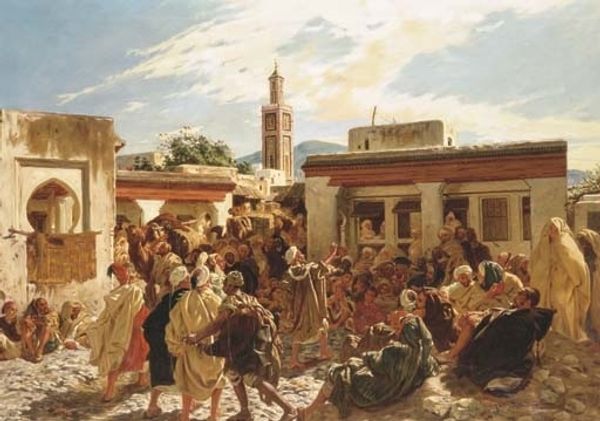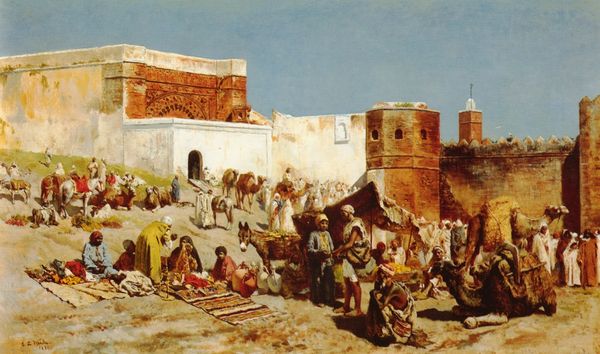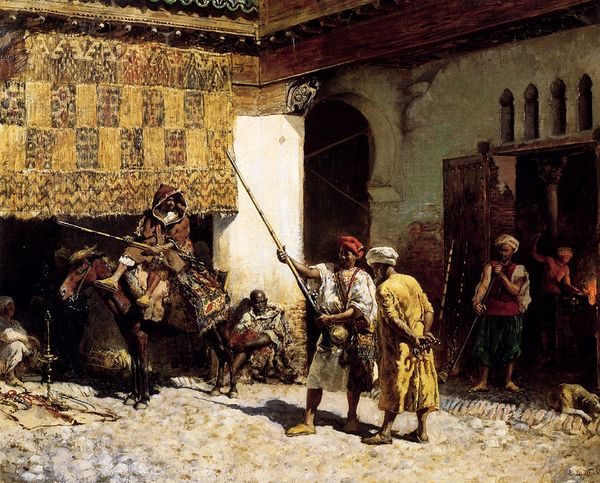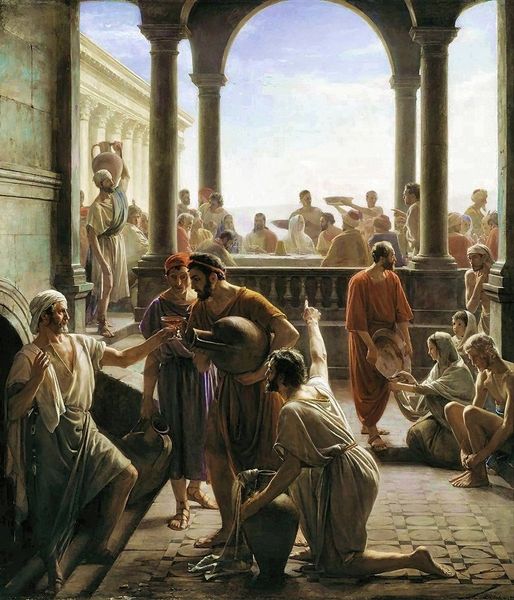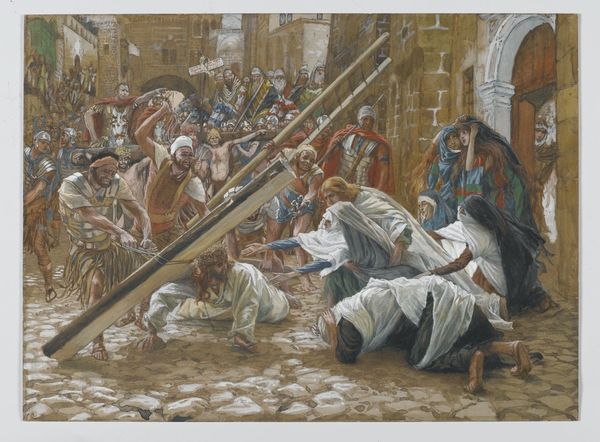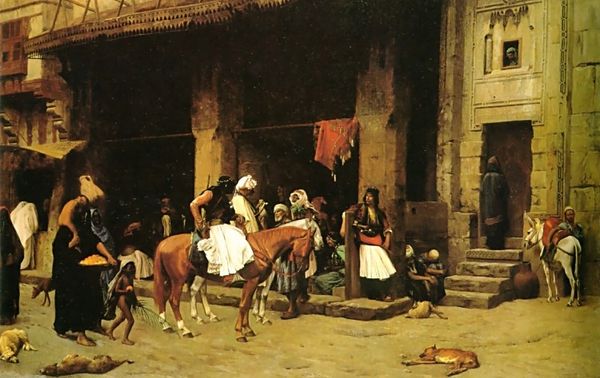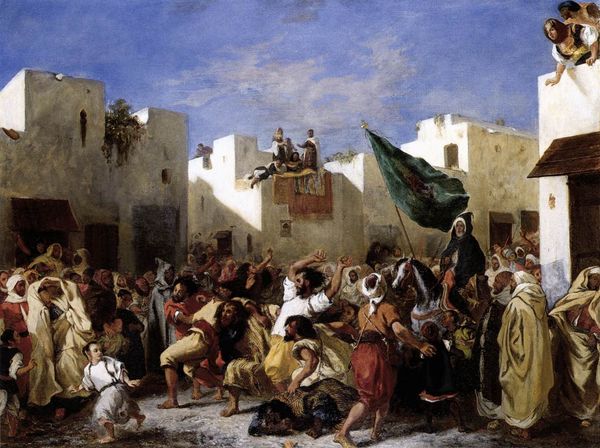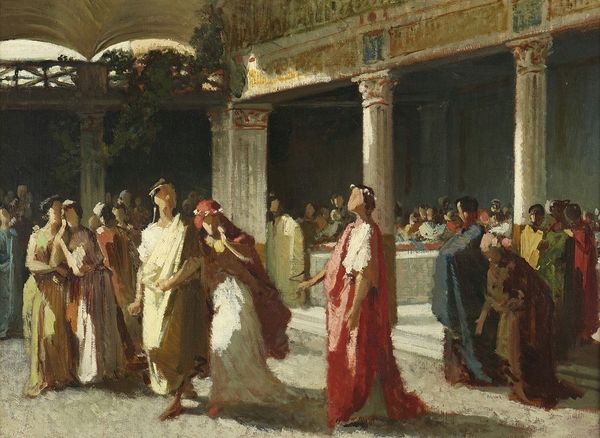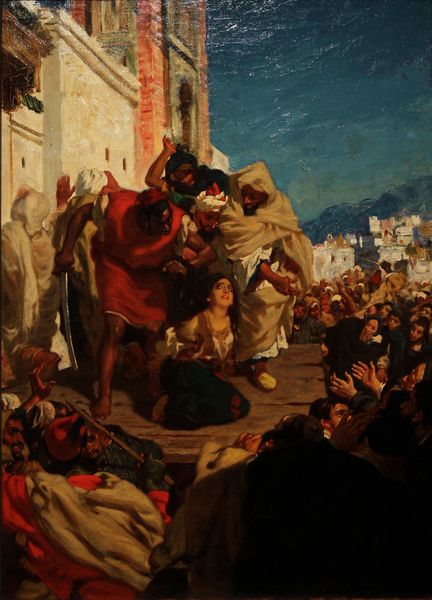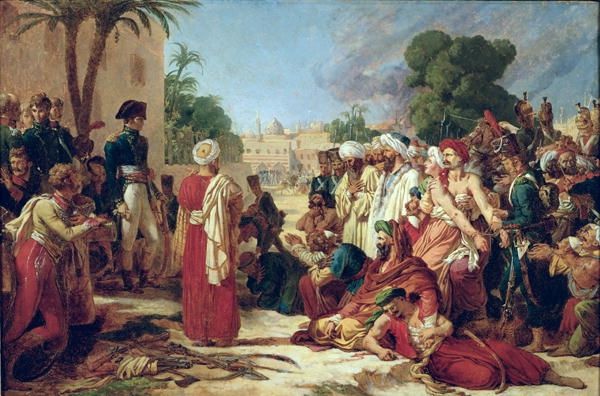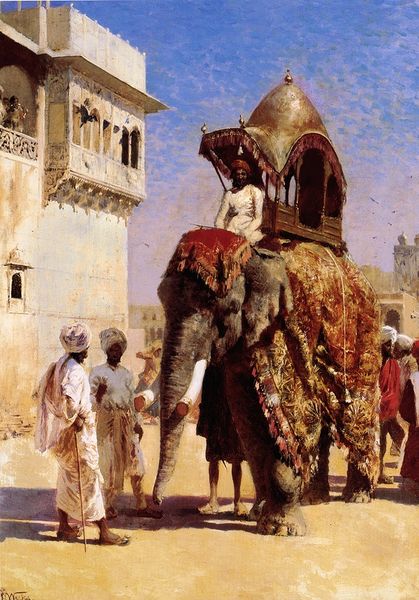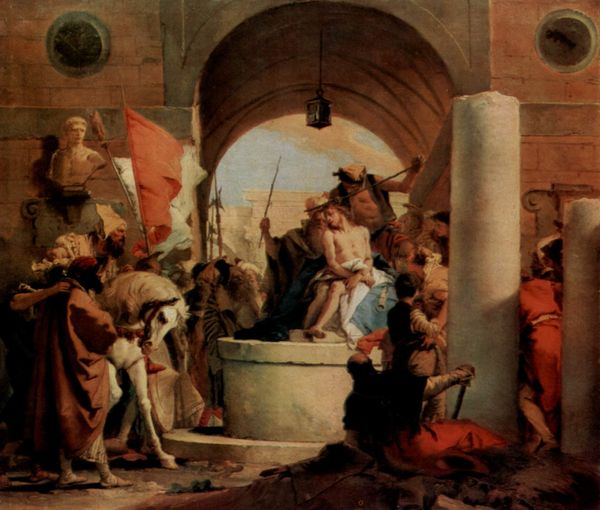
oil-paint
#
neoclacissism
#
oil-paint
#
greek-and-roman-art
#
oil painting
#
genre-painting
#
history-painting
#
academic-art
Copyright: Public domain
Curator: Immediately I’m struck by the somewhat sterile and theatrical air of this work, like a stage production. What are your initial thoughts? Editor: It feels intensely performative, definitely, a reconstruction of an imagined past rather than a genuine representation. The clarity almost feels hyper-real. Curator: Well, this is Jean-Léon Gérôme’s *The Pyrrhic Dance.* Gérôme was a key figure in the Academic art movement of the 19th century, known for meticulously researched historical and genre paintings, often rooted in classical antiquity, so reconstruction is a great observation here. Editor: Historical accuracy through a colonial lens perhaps? Who are these figures, really, and for whose entertainment are they performing? The "Pyrrhic Dance" itself was supposedly a military drill disguised as a dance…but who is watching, and benefiting? Curator: True. Gérôme was obsessed with archaeological detail, and the symbols he employs—the instruments, the attire—all aim to transport the viewer to ancient Greece. This wasn't solely about historical accuracy for accuracy’s sake. He aims for emotional resonance through established tropes. The dance invokes themes of war, valor, sacrifice… ideas central to European power. Editor: Absolutely. I think you’re highlighting the psychological dimensions – that his Orientalist and Classicist paintings acted as cultural endorsements for imperial power by visually encoding values from the Roman Republic in this picture such as military virtue. The setting is monumental. Curator: Indeed. The stage upon which these dancers are performing is as essential as the players themselves. Consider how these architectural components underscore both Greek power and cultural legacy, which later colonial empires leveraged in their iconography of conquest and expansion. Editor: It raises critical questions about the legacies we choose to celebrate, doesn’t it? Curator: Gérôme's canvas becomes more than an attempt to recreate history; it's a cultural object imbued with meanings that shift as social consciousness grows. Editor: Indeed. Revisiting this today compels us to inspect the values they implicitly endorse and also how their artistic interpretation impacted societies involved then, as well as shaping ours. Curator: I think your emphasis on coloniality encourages viewers to critically assess these art historical narratives instead of accepting the imagery uncritically. Editor: Art's power persists in its enduring dialogue, inviting a renewed critical lens in each moment.
Comments
No comments
Be the first to comment and join the conversation on the ultimate creative platform.
